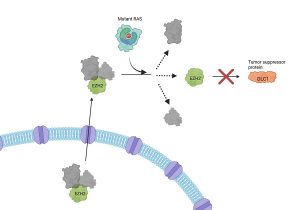My problem with your drinking: Australia’s hate-love relationship with alcohol
It's simply easier to say others are flawed than admit _you_ might be the one who is flawed. ShutterstockIn this year’s annual alcohol poll, 34{c754d8f4a6af077a182a96e5a5e47e38ce50ff83c235579d09299c097124e52d} of Australians said they drink to get drunk, 43{c754d8f4a6af077a182a96e5a5e47e38ce50ff83c235579d09299c097124e52d} said they had vomited as a result of drinking and 75{c754d8f4a6af077a182a96e5a5e47e38ce50ff83c235579d09299c097124e52d} said Australia has a problem with excess drinking or alcohol abuse. But in the same Foundation for Alcohol Research and Education poll, 92{c754d8f4a6af077a182a96e5a5e47e38ce50ff83c235579d09299c097124e52d} of Australians identified themselves as responsible drinkers. As the young people might say, what the …? A majority of Australians agree we have a problem with alcohol. But almost all say it’s not a problem of theirs – it’s a problem that exists somewhere outside of their world. There are both contradictions and abstractions in this discussion. But


In this year’s annual alcohol poll, 34{c754d8f4a6af077a182a96e5a5e47e38ce50ff83c235579d09299c097124e52d} of Australians said they drink to get drunk, 43{c754d8f4a6af077a182a96e5a5e47e38ce50ff83c235579d09299c097124e52d} said they had vomited as a result of drinking and 75{c754d8f4a6af077a182a96e5a5e47e38ce50ff83c235579d09299c097124e52d} said Australia has a problem with excess drinking or alcohol abuse.
But in the same Foundation for Alcohol Research and Education poll, 92{c754d8f4a6af077a182a96e5a5e47e38ce50ff83c235579d09299c097124e52d} of Australians identified themselves as responsible drinkers.
As the young people might say, what the …? A majority of Australians agree we have a problem with alcohol. But almost all say it’s not a problem of theirs – it’s a problem that exists somewhere outside of their world.
There are both contradictions and abstractions in this discussion. But it makes perfect sense to me.
It’s simply easier to say others are flawed than admit you might be the one who is flawed. Psychologists refer to it as the self-serving or positivity bias; it’s the only way to protect our “fragile ego from the blows of reality“ and to reconcile our often contradictory behaviour in a complex world.
To think our own behaviour is irresponsible requires us to actually admit we might be a failure, or that we are out of control. And this would be a serious attack on our ego.
So, we seek out evidence, in all its flimsy forms, that confirms how we would like to see ourselves, and then interpret a question in the way that suits that approach.
Abstract language
Terminology such as “drinking responsibly” or “wisely” or “properly” is abstract at best, and diverting at worst.
What exactly is a responsible drinker? If I drink two or three glasses of wine at dinner during the week am I “Drinking Wise”? What about two beers after work on Friday, plus a cocktail at the Comedy Festival for a bit of treat?
Upon which the inevitable question arises: am I okay to admit that I might be an irresponsible drinker (whatever that means)? Irresponsible sounds pretty bad, doesn’t it?
And accusing someone else of being irresponsible, because they were having “a couple of beers with their mates” or a few glasses of wine after a hard day at work, would likely result in cries of being “unAustralian”, “politically correct” or some other cliché that is rolled out whenever someone challenges the status quo.

jofo2005, CC BY-ND
The problem is that alcohol is such an integral part of most adult (and adolescent) life in Australia that it has become a social norm. It requires significant psychological resources to challenge these norms.
Think about it. When you refuse alcohol at social events, it is often followed by a “why?”, an assumption that you are pregnant or on some “health” regime, or participating in a fundraising abstinence month the questioner wasn’t aware of. It’s easier to be a drinker than to not be a drinker.
Diverting the problem
The use of imprecise language, rather than specific, measurable metrics, makes it difficult for anyone to judge their behaviour in comparison to others. By telling people to behave “responsibly”, we create a sense that something is being done. But at an individual level, it is up to us to decide what it actually means.
This “hands-off” approach to public health issues is common across a range of contexts. People are expected to assume total responsibility for managing their own well-being.
It’s a common technique in many sectors where a risk has been identified, but governments are uncomfortable about regulation. By emphasising threats to personal freedom and liberty, opponents to state-based interventions on public health grounds establish an argument that, at face value, sounds plausible.
Industry and conservative stakeholders use the term “nanny state”, for example, to discredit any opposition and deride government public health interventions, despite the fact that traditionally nannies are people who are credited with being caring, considerate people, who have the best interests of their charges at heart.
So, they do something that looks like they’re doing something. It’s a kind of “regulatory theatre”.
People not really qualified to make judgements about human behaviour, work together to come up with simple interventions, such as “Drink Responsibly” or “Drink Wise” labelling, along with industry codes of conduct. These campaigns work to some degree by gently modifying social norms, but their impact is minimal.

star5112/Flickr, CC BY-SA
That said, public health practitioners are often their own worst enemies. Because of their desire to be in a position to defend their approach and be seen to be responsible (there’s that word again), sometimes they over-complicate or provide too much advice, get caught up in statistics, or approach the message in an overly rational way.
Marketing the message
In any marketing campaign, whether you are trying to get people to “buy” your product (and in this context, the product would be to reduce drinking) or maintain loyalty (continue to drink less or not at all), programs need to communicate to the target market in a way that is, direct, accessible, personal and incremental.
So, instead of general, vague language such as “responsible”, “wise” or “proper”, we should be helping vulnerable segments to understand what actually is wise, proper or responsible: How many drinks are safe? What actually constitutes a standard drink, in comparison to what we are actually served?
But, we also need to be careful not to get into the complexity of weight, height, alcohol content, sex, and so on, which will simply confuse the campaign. Marketers of commercial products recognise that they have to gently, incrementally, move their customers towards a place where the only sensible option is to buy the product: in this case, a reduction in the consumption of alcohol.
Simply running an advertisement telling people to stop doing something because it’s bad for them, or because their friends will reject them, is not the way to change behaviour.
Don’t get me wrong, awareness campaigns are a start. However, behavioural change requires significant resources, repetition, modelling, and support from range of individuals, institutions, leaders, and infrastructure for them to be successful.
You also need to build a support network around the target market, that makes it easy for them to adopt the new behaviour, and more difficult for them to return to their old habits.
The only way forward is to recognise that there are a range of parties who must be involved in addressing the problem: the individual, family and friends, government and institutions, and the alcohol industry.
Of course, the individual has to have responsibility for their behaviours.
But we need to have a realistic understanding of how choice is undertaken, how implicit attitudes and the effect of other people and institutions influence our choices, support from a range of stakeholders, and clear information to help guide our own behaviour.
![]()
Paul Harrison does not work for, consult to, own shares in or receive funding from any company or organisation that would benefit from this article, and has no relevant affiliations.
SOURCE: Health + Medicine – Articles – The Conversation – Read entire story here.








